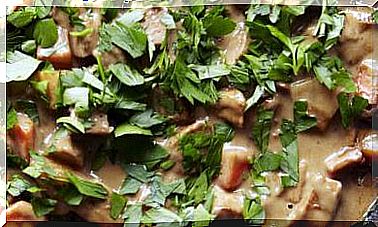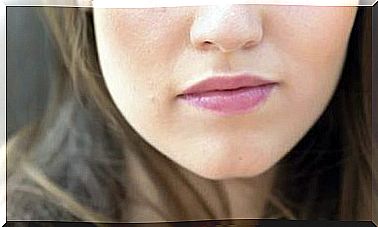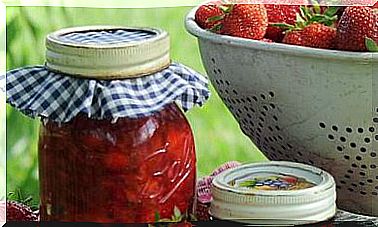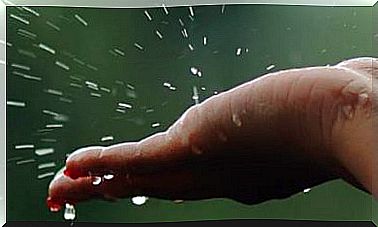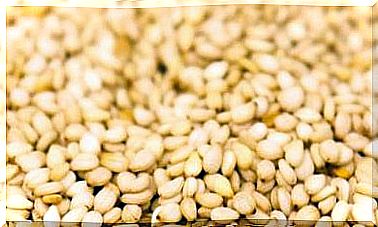Amla, The Fruit Of India That Strengthens And Gives Shine To Your Hair
Discover the properties of amla to show off healthy and strong hair. We explain how to use amla powder or amla oil.

Amla is a medicinal tree of the Ayurvedic tradition whose use is lost in time. Its properties make it ideal for natural hair care.
In this article we invite you to discover the most interesting details of this plant and the properties of its fruits, from which amla for hair is obtained.
What is amla
When we speak of amla for cosmetic purposes we refer to dust or oil obtained from the fruit of the Phyllanthus emblica L . It is a medium-sized tree that is also known by another scientific name: Emblica officinalis Gaertn .
The region of origin of this species is Southeast Asia and it grows in countries such as India, Nepal, Sri Lanka, Thailand, Indonesia or Northern Australia.
For this reason, depending on the place of origin, it is known by different popular names: amalaka , amlaki , mala , nellikkai … In English it is the Indian gooseberry or emblic , while in Spanish it is known as amla or Indian gooseberry.
From the Emblica officinalis the fruits are used for their properties and nutrients. They have the appearance of small greenish-yellow globes similar to berries and are harvested in the fall.
Nutrients and outstanding properties
Ayurveda medicine has used the fruits of the amla tree for centuries, taking advantage of its healing properties.
According to this system of traditional medicine, amla is a “Rasayana” (rejuvenating) plant, because it provides energy and vitality. Due to its characteristics and properties, amla is associated with the treatment and prevention of many health problems.
Knowing the nutrients concentrated in these small round fruits will allow us to understand why the Indian gooseberry is so precious. The raw pulp of amla contains abundant vitamins and mineral salts, among which are:
- Vitamin C
- Match
- Calcium
- Potassium
- Manganese
In addition, Emblica officinalis is rich in phenolic compounds (especially tannins) that together with vitamin C give it a great antioxidant effect.
Due to the high concentration of vitamin C and tannins, the taste is quite acidic and astringent. For this reason, in India and in other nearby regions the fruits are marinated in water and salt for a time in order to eliminate a part of the tannins and to make it more palatable.
The consumption of macerated raw fruit is common in countries where this fruit grows wild and is used to improve digestion among other applications.
However, in the West, amla powder or oil is mostly used for hair care.
But what does this plant give us for the health and beauty of the hair?
Benefits of amla for hair
Thanks to its active antioxidant compounds, amla protects and strengthens the mane.
Amla in hair, in fact, has many benefits for the hair and scalp:
- Anti fall. The phytoelements of this fruit promote circulation and nourish the hair at the root, stimulating growth and preventing seasonal hair loss.
- Fight dandruff. Thanks to the abundance of vitamin C, the Indian gooseberry has an anti-inflammatory, moisturizing and antibacterial action that prevents the formation of dandruff and reduces the accumulation.
- Delays premature graying of hair. The antioxidants in amla work by slowing down the damaging effects of oxidative stress, which can accelerate the appearance of gray hair and increase dryness.
- It favors growth. The regular use of masks, oils and other natural products based on amla rich in mineral salts and fatty acids promote hair growth, which will also look healthier, voluminous and shiny.
- Against lice. Shampoos with amla and other plant extracts are effective as a natural treatment for nits.
Amla can also be used to care for the skin due to its moisturizing, rejuvenating and bactericidal effect. But the benefits of this plant go beyond the cosmetic properties.
How to use amla for hair
For the health and beauty of your hair you can take advantage of amla powder or amla oil. In both cases, you will have to follow the manufacturer’s instructions for a correct application.
- Amla oil: In general, amla oil can be applied directly to the scalp with light circular massages with the tips of the fingers and left on for about 30 minutes before washing the hair. This application can be repeated twice a week.
- Amla powder: Amla powder can be used to prepare amla hair masks that are obtained by mixing the powder with warm filtered water to a creamy consistency. It is applied from roots to ends on clean and damp hair. Leave it for half an hour and rinse. Also, it can be repeated twice a week.
The soul mask strengthens the hair, reducing hair loss and helps prevent the appearance of premature graying. Due to its antioxidant properties that care and protect the hair, amla is very often used in the mixture of plants for henna. Especially in dark-hued hennas.
Other health benefits
The Emblica officinalis of the amla powder is obtained or the amla oil is a plant that has traditionally been used for centuries in the treatment or prevention of various diseases.
In fact, the high concentration of antioxidant active principles found in its fruit and its traditional application have been the starting point of a large number of recent scientific investigations.
Although more studies are needed to validate its efficacy as a treatment, there is evidence about the potential benefits of amla extracts in case of:
- Heartburn.
- Age-related macular degeneration (AMD).
- Some types of cancer.
- Control of blood sugar levels.
In addition, it has shown protective action of the heart, liver and regulator of the immune system.
For internal use, the fruit macerated in salty water or juice is used. There are also food supplements with amla extracts that will be taken following the instructions of a health professional.
Contraindications
There are no specific contraindications for the cosmetic use of amla. However, it is advisable to perform a sensitivity test if it is the first time it is used.
Also, if you have colored hair, keep in mind that the plant pigments in amla could alter your color if you apply it frequently.
Sources consulted:
https://www.healthline.com/health/beauty-skin-care/amla-powder-for-hair#how-to-use
https://nutritiondata.self.com/facts/fruits-and-fruit-juices/1902/2
https://www.webmd.com/diet/health-benefits-amla#1


